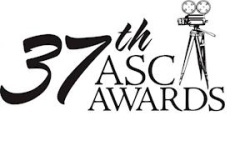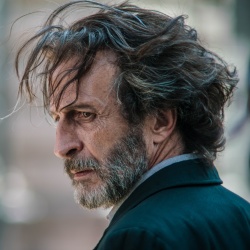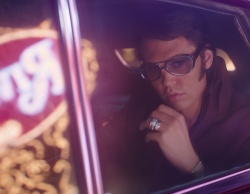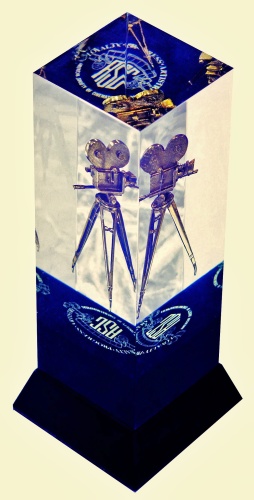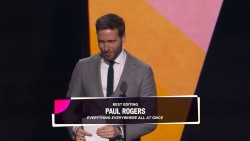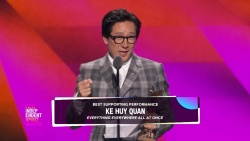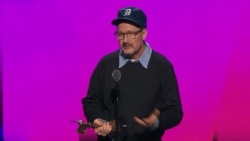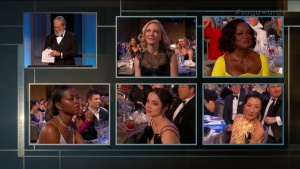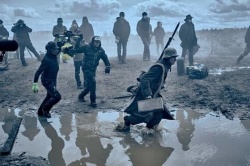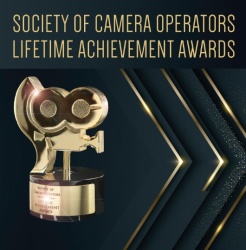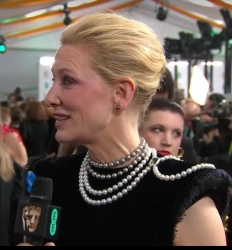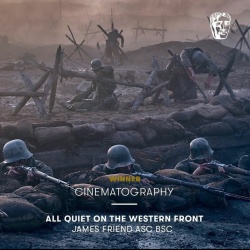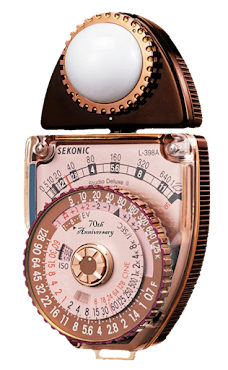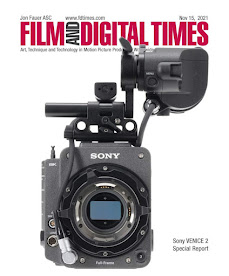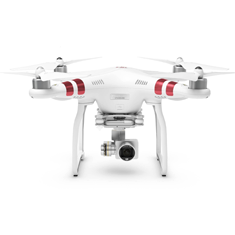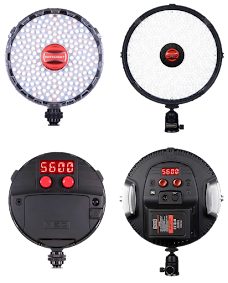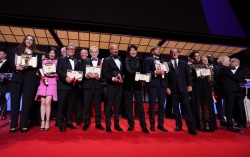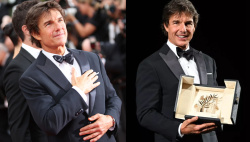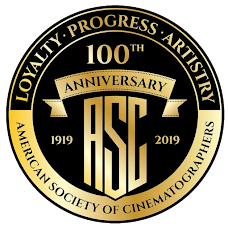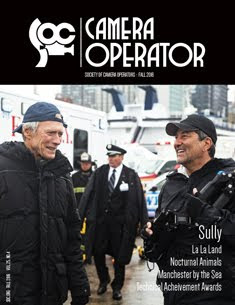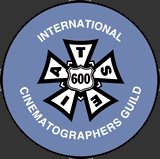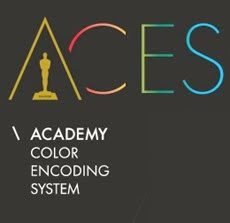There are three types of heads and many brands of heads available to camera operators and directors of photography for use in studio or on location. The types of heads are fluid, friction and geared heads. Mostly, all new heads are made of aluminum alloy, some older heads and accessories were made of magnesium and much older heads were made of cast steel.
The fluid head employs the principle of fluid resistance. The restricted flow of a high viscosity liquid forced through grooves machined inside a metal drum creates drag on the lateral and vertical movements of the head. The friction head employs the the principle of surface resistance. The friction of fiber discs against metal washers creates drag on the lateral and vertical movements of the head. The geared head employs the principle of mechanical advantage. The ratio of the angular speed of driving members to driven members of a gear train, linkage, or cable creates force on the lateral and vertical movements of the head.
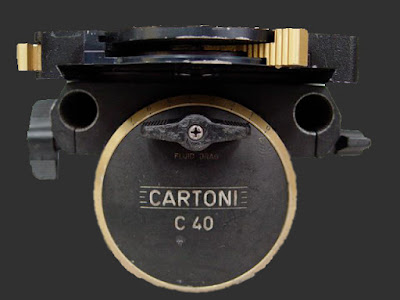
The
Cartoni c 40 is hand-crafted from the latest hi-tech metal alloys,
C40 S is a
Heavy Duty fluid action head specifically designed to support Studio/EFP configurations or 35mm film cameras. The Counterbalancing system, activated by an 8 - position easy-grip selector, works with three reinforced groups of helicoidal high section springs. This mechanism combined with a 60mm. sliding base, allows the camera person to fine tune an extremely wide range of cameras weighing from 10 to 45 Kg (22 lbs to 100 lbs) throughout a tilt range of -/+ 65 degrees.
 Technovision MKII
Technovision MKII geared head with 3 speed settings, built-in tilt plate. Optional gear reducers for this geared head are available, providing more control with gear ratios.
Today, most friction heads-tripod combos are manufactured for low cost consumer still and video photography with the exception of
Gitzo, that makes consumer and hi-end tripods and friction and fluid heads for the still photography market. Fluid heads are the most popular and are marketed for the consumer, pro-sumer, and professional market and mostly are offered as an option to a tripod according to your needs, type and weight of camera. Friction heads were in use for all types of still photographic and consumer motion picture cameras around world, until
Chadwell O'Connor invented the
fluid damped camera head in 1952.
 Worrall Geared Head
Worrall Geared Head
Geared heads were manufactured to cater the need of fluid camera movement using the heavy weight or cumbersome motion picture cameras of the past. The use of gears predates to the early days of cranking cameras, friction heads and poorly designed geared heads that were the norm for camera panning and tilting for several decades in Hollywood and the world over until
George Worral created the
Worral Geared Head in 1952. "The first stable, smooth and balanced triple-mode geared head." "It took very little force to move it." Worrall said. Epics such as "
Lawrence of Arabia" and "
Dr. Zhivago" were filmed using the
Worrall Geared Head.

The
Mitchell Geared Head was a predecessor of the Worral head. Shown above with 3 speeds and built-in tilt plate.

The
Mitchell Vitesse Geared Head allows 360 degrees movement on two axis; pan and tilt.
Now days, the making of better, lighter and studier fluid heads with more features than ever, along with resistant lighter graphite tripods have become the equipment of choice for the broadcast news gathering industry, the documentary and the independent filmmaker. Sachtler, Bogen, Manfrotto, O'Connor and Vinten to name a few, have revolutionized the portability of fluid camera movement.

Sachtler’s fluid head Cine 30 HD features a side-load mechanism for the camera plate. A key advantage of this technology is that the fluid head can be side-loaded together with its camera set-up – quickly and easily. The mechanism is compatible with camera plates from OConnor and ARRI. The operating elements, manufactured according to 2K processes, are especially convenient. If you need a front box for all sorts of utensils or tools, it is simple to mount an adapter which is exceptionally practical for film and HD shooting.

The GearNex geared head is a precision, lightweight and compact pan and tilt gear head designed for independent and professional filmmakers. Perfect for all professional cameras such as: RED ONE • Panasonic Varicam • Panasonic HDX900 • Sony F900 • Panasonic DVX100 • Panasonic HVX200 • Sony FX1 • Sony EX1/EX3 • Other lightweight 35mm and 16mm film cameras. Nothing beats the smoothness of a geared head for certain moves, and some moves are actually much easier with a geared head than a fluid head as on dolly.
 Geared Arrihead 2 on a Fisher 10 dolly
Geared Arrihead 2 on a Fisher 10 dolly
Geared heads have been the preferred choice of motion picture cameramen for decades. The gear head provides precision control over your shots. Make small detailed corrections to compositions. Rock solid control on long lenses. Minimizes fishtailing on dollies and cranes. Repeatable moves without overshooting your mark. (
Panahead Geared Head, shown above)
Besides of the geared heads shown here, we should mention other important heads that allow the director of photography or the camera operator get the job done like, the Cartoni Dutch Head, the Van Diemen Swing Head or Tango Head, the Lambda Head or Nodal Swing Head and the Weaver Steadman 2 and 3 Axis Head to name a few.
Among the remote and motion controlled heads I would like to mention , the Scorpio Head, the Hot Shot, Super Shot and Star Cam by Egripment, the Technovision Super Crane with 3 xis Z Head, the Louma 2 Camera System, the Talon by Ravens Claw and the Mark Roberts MOCO Milo . Check The Talon and Mark Robert's MOCO Milo at Camera Control in Santa Monica, USA in the video window above- click ON DEMAND- search for Talon or Milo on playlist.
All these choices of camera movement lead us to the next question: Which set-up is better, a fluid head or a geared head for your next project as camera operator? To answer this question, I would like to refer to the commentaries made by Roger Deakins, BSC/ASC in his oddly interrupted internet forum. (I spoke with Roger about the subject and about other camera and lighting setups he did during the production of the Big Lebowsky and Revolution Road while vising the ASC Open House in 2009).
Roger explained,
A geared head allows for a very accurate pan or tilt and a clean hard stop. I know it might seem like an old fashioned tool and I sometimes don't even carry one on some shoots but it is a surprisingly accurate and easy tool to use. I especially like it on a stage. Try it out! If you operate and want to use a remote head you might then have to use wheels in just the same way.

There are some cinematographers whom I admire a great deal and who never use a geared head. Even when they operate a remote head they might use a joystick instead of wheels. And, of course, many Cinematographers don't operate the camera themselves anyway. Maybe it is just a personal preference but I do find I have a lot of control on a geared head. I don't always use one and there have been films where I haven't had one on the shoot at all, but I would say that more often than not I have one in my camera package. It really does depend on the look I am going for and the nature of the work. It seems to me that a geared head gives me a more solid feel, a kind of forced formality to my shots and I will use one for those films or scenes where I want to have a more 'controlled' look. I will also tend to use one in a studio situation, for long dialogue scenes and for many specific dolly moves that require speed and a firm stop.
The first time I used one on a professional production was on '1984'. I didn't have a geared head in my camera package but the Line Producer ordered one for me to use on a particular long lens shot. He was playing a trick on me really. As had no confidence in me as a cinematographer he thought that hiring the geared head would show up my failings. He had no way of knowing that I had practiced with a geared head whilst at Film School and could sign my name with one. He never found out though. Whilst he was looking over my shoulder, I completed the shot, which was purely static, and then suggested he send the head back as it was an expensive rental item.

The compact geared head smaller, lighter in weight and equally efficient is the formula of the future. The
ARRIHEAD 2 is it is successful product. With an equal equipment range and operating convenience, it is 8 cm shorter and approximately 4 kg‘s lighter than the large
ARRIHEAD. With this design, the
ARRIHEAD 2 is an ideal production tripod head not only for 35 mm cameras, but also for 16 mm filming. (
Arrihead shown above)
The head I prefer is the Arri Lightweight head and I use a set of large wheels instead of the smaller ones that come with this particular model. Much of the work I do is with a remote Power Pod head mounted on an Aerocrane jib arm and,in much the same way, this requires the use of a set of wheels to control the head. One way or another it is important, for me at least, to be able to use the wheels.
Practice? Just get a geared head and practice signing your name - or you might start with a figure of eight and build up to it. By the time you can achieve your signature you will find that operating by the wheels has become second nature to you and that is what it's about. You need to be able to get behind the camera and, without a rehearsal, operate the shot you want. It is no use having to practice with the stand ins or the actors. If you plan to be a cinematographer who operates the camera, you need to be able to concentrate on the WHY of the shot and not the HOW.
The gear head does take some practice and I wouldn't recommend using one without being very confident in your ability with it. I was taught to use a stick with a felt tip at the end of it, instead of a camera, and practice until I could sign my name with it! Roger concludes.
So, I say that the choice and the use of a fluid head versus a geared head is one of the decisions a director of photography or camera operator have to resolve early in pre-production. Any of the two choices are O.K. Both choices represent only another tool in the cinematographer's bag.
Here is a list of geared heads. Some are new models in active use by many cinematographers and other are older models but still found at different rentals houses or found for sale at different used motion picture equipment companies.
• Arrihead
• Arrihead 2
• Arri/Mitchell Geared Head
• Ceco Blimp Type 2-Speed Geared Head (TH-7)
• Ceco Pro-Jr. Geared Head
• GearNex Gearhead
• Houston Fearless Cradle Head
• MGM Geared Head
• Mitchell Geared Head
• Mitchell Mini (Lightweight) Geared Head
• Mitchell Vitesse Geared Head
• Mitchell Vista-Vision Geared Head
• Moy 16” Classic
• Moy 16” Standard
• Samcine Moy Geared Head
• Samcine Moy MkIII Geared Head
• Moy 16” Neptune Underwater Head
• Moy 22” Legend
• Moy 12” Mini
• NCE Geared Head
• NCE Cradle Geared Head & Model CGH
• NCE Jr. Geared Head
• NCE/Ultrascope MkI
• NCE/Ultrascope MkII
• NCE/Ultrascope MkIII
• Panahead
• Panahead, Super
• Panahead, Compact
• Sea Head
• Technovision Technohead MkI
• Technovision Technohead MkII (H)
• Technovision Technohead MkIII
• Worrall
• Worrall Mini
(List compiled by Ryan Patrick O'Hara)
Roger Deakins photo ©George Leon 2009
 The Cartoni c 40 is hand-crafted from the latest hi-tech metal alloys, C40 S is a Heavy Duty fluid action head specifically designed to support Studio/EFP configurations or 35mm film cameras. The Counterbalancing system, activated by an 8 - position easy-grip selector, works with three reinforced groups of helicoidal high section springs. This mechanism combined with a 60mm. sliding base, allows the camera person to fine tune an extremely wide range of cameras weighing from 10 to 45 Kg (22 lbs to 100 lbs) throughout a tilt range of -/+ 65 degrees.
The Cartoni c 40 is hand-crafted from the latest hi-tech metal alloys, C40 S is a Heavy Duty fluid action head specifically designed to support Studio/EFP configurations or 35mm film cameras. The Counterbalancing system, activated by an 8 - position easy-grip selector, works with three reinforced groups of helicoidal high section springs. This mechanism combined with a 60mm. sliding base, allows the camera person to fine tune an extremely wide range of cameras weighing from 10 to 45 Kg (22 lbs to 100 lbs) throughout a tilt range of -/+ 65 degrees. Technovision MKII geared head with 3 speed settings, built-in tilt plate. Optional gear reducers for this geared head are available, providing more control with gear ratios.
Technovision MKII geared head with 3 speed settings, built-in tilt plate. Optional gear reducers for this geared head are available, providing more control with gear ratios. The Mitchell Geared Head was a predecessor of the Worral head. Shown above with 3 speeds and built-in tilt plate.
The Mitchell Geared Head was a predecessor of the Worral head. Shown above with 3 speeds and built-in tilt plate.












